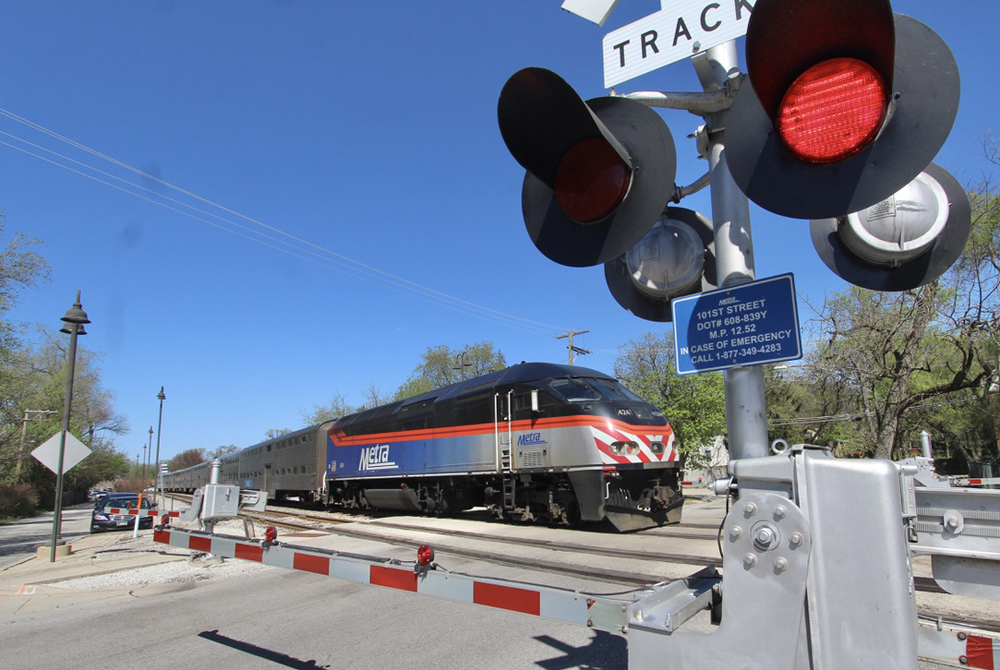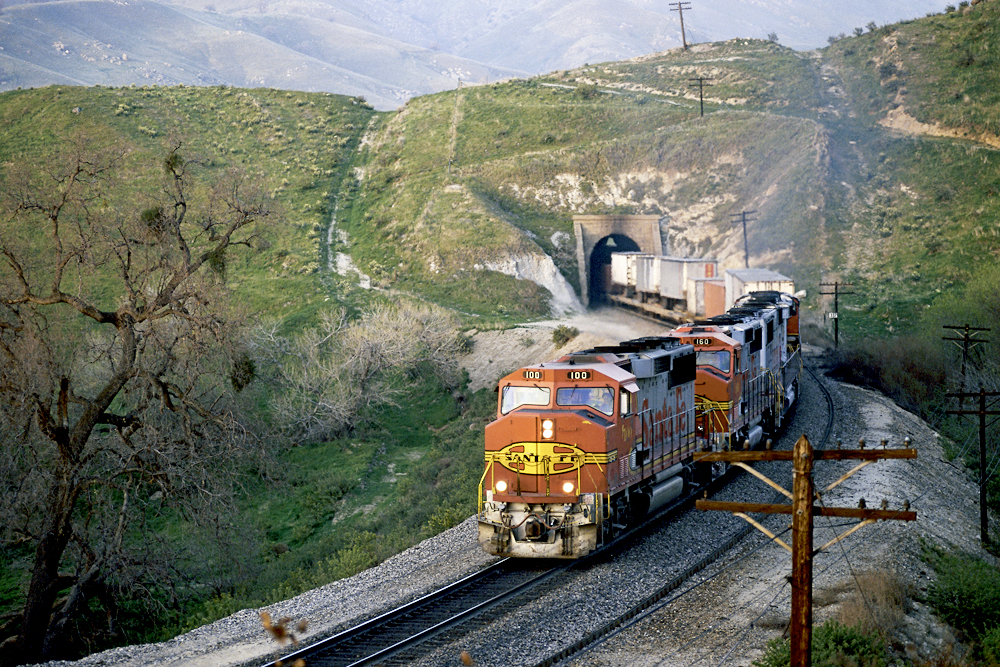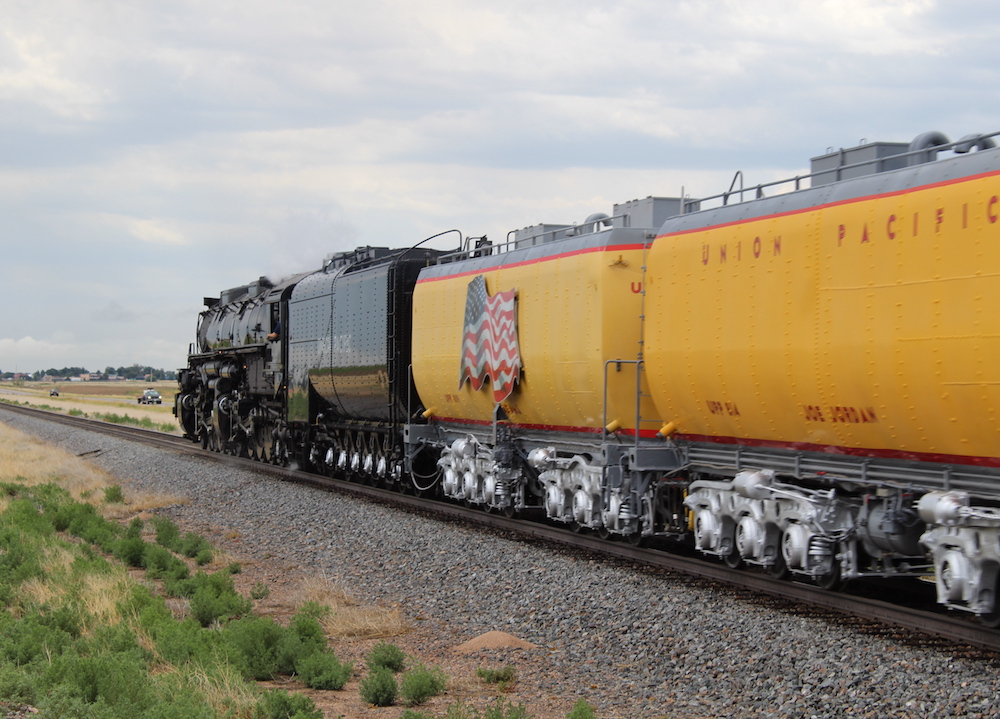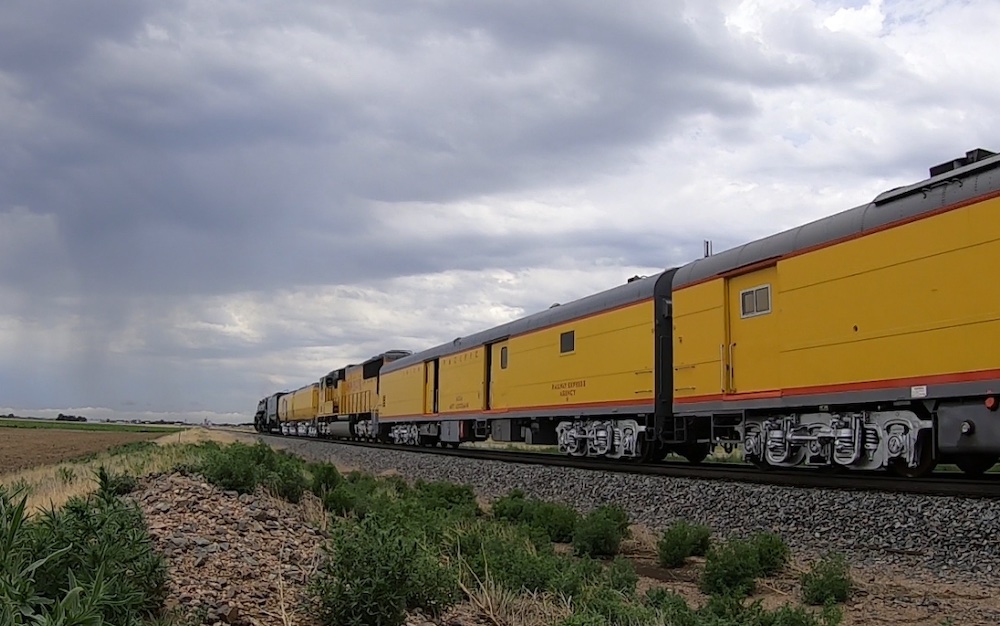“Diesel Helpers” are two buzzwords associated with today’s mainline steam excursions – from short lines to Class I railroads, and even selected tourist railroads off the national network. The use of one, or lack thereof, differs between railroads, organizations, and their operating preferences. Some are comfortable letting the steam locomotive travel solo. Others would prefer a little peace of mind, usually right behind the tender, with a reason or a few that’ll help answer the age-old question, “Why is there a diesel helper?”
1. Power limitations
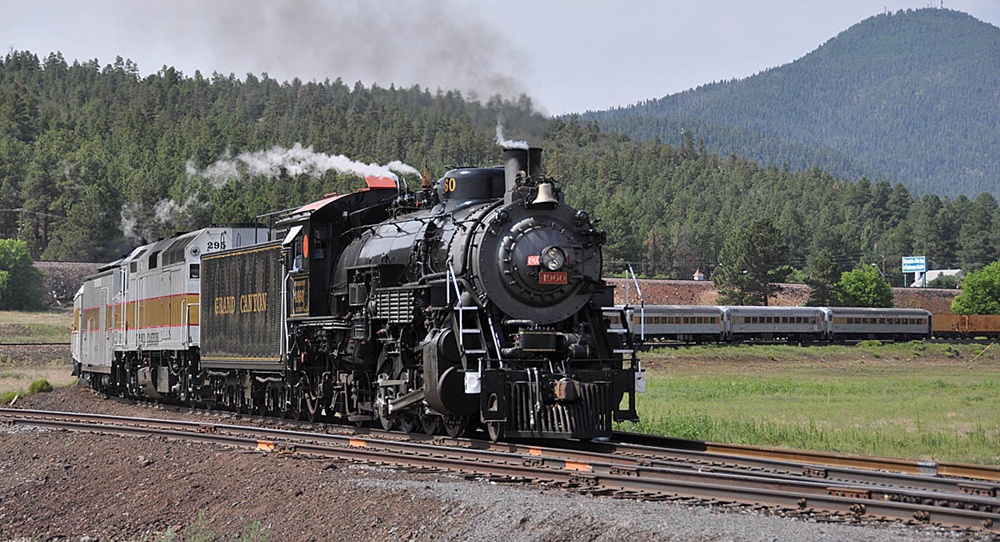
Not all steam excursions traverse flat terrain. Depending on the terrain’s ruggedness (whether ascending or descending grades), the train’s length and tonnage, and how powerful the steam locomotive is, diesel helpers may be included to provide extra muscle.
Example: Arizona’s Grand Canyon Railway is a former Santa Fe branch line, with the allure of mainline mountain railroading stretching along the route from Williams to Grand Canyon National Park. Unassisted, the railway’s 2-8-2 No. 4960 and 2-8-0 No. 29 can each handle up to eight passenger cars while navigating the sharp curves and 3.5% grades. When the excursion trains exceed beyond the eight cars, adding the railway’s F40 diesels right behind the steam locomotives is considered a must.
2. Fuel range
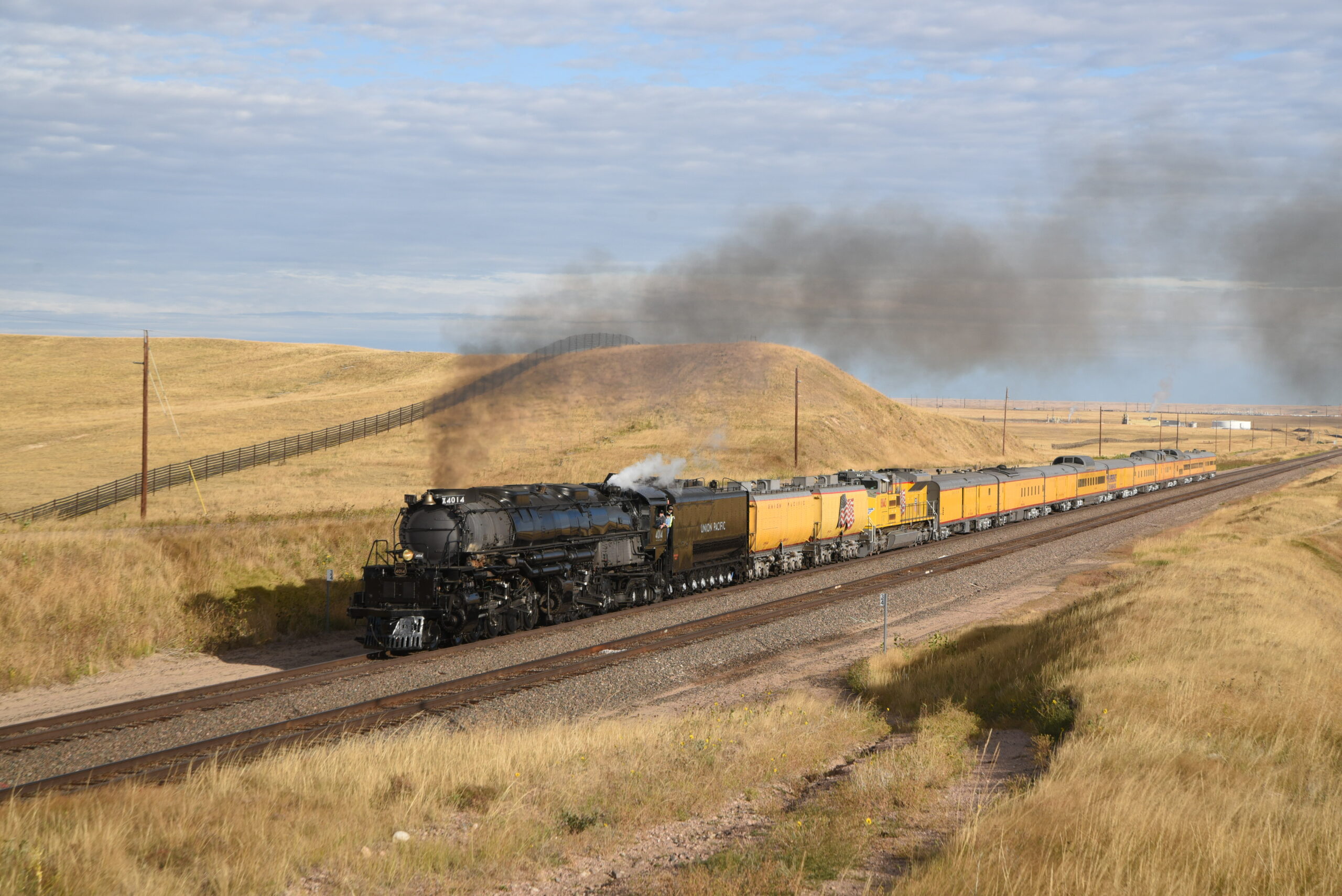
Logistics can make or break a mainline steam excursion, and the source for fuel can add a complicated piece to the puzzle. Gone are the days where accessible facilities are located along the route so a locomotive can easily stop, replenish coal/oil and water, and be on its way. Today, longer distances between limited fuel stops are part of the norm. Running a diesel helper, usually at a lower throttle notch, can help slow fuel consumption on the steam locomotive.
Example: Union Pacific Railroad’s steam program revolves around system-wide tours with 4-8-4 No. 844 and 4-8-8-4 Big Boy No. 4014, which can last from a few days to a few months. No. 4014’s daily operations can cover at least 150 miles without refueling, according to Trains’ Jan. 2022 issue. No. 4014 uses 5,900 gallons of used motor oil and 75,000 gallons of treated water spread among the main tender and two auxiliary tenders. If the locomotive needs help stretching the fuel range and covering the distance, a selected diesel from UP’s roster is included.
3. Positive Train Control
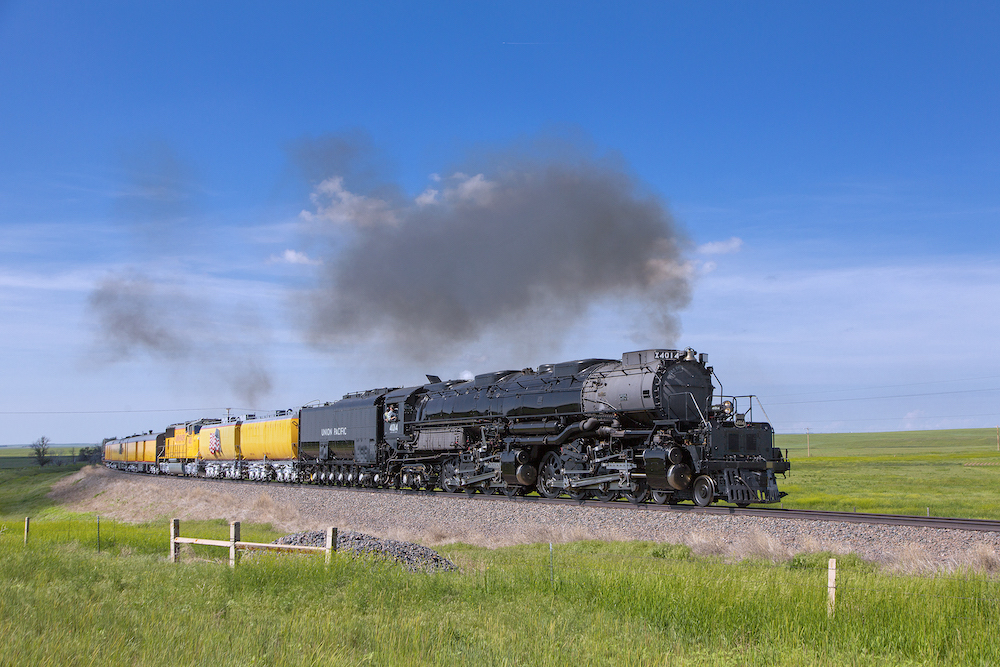
Mainline steam heading a train across a Class I railroad has become a rarity in the world of Positive Train Control (PTC). Rightly so as former Trains’ Editor Jim Wrinn reported in the July 2018 issue: “Any system combining these old and new technologies will be complicated and expensive.” Recent steps have been taken to identify a solution, with one example being the LeapTC, designed and developed by John Howard of Santa Fe No. 2926’s owner, the New Mexico Steam Locomotive & Railroad Historical Society. Utilizing a PTC-compliant diesel helper, the system relays information from said unit to the cab of the steam locomotive.
Examples: No. 2926, along with Santa Fe No. 3751 and UP No. 4014 are reported to have LeapTC installed. The latter has been the only steam locomotive to use it extensively, with Union Pacific’s EMD SD70M No. 4015 hosting many of the components needed since 2021. But now with both Canadian Pacific No. 2816 and No. 4014 fully equipped with PTC and Nos. 3751 and 2926 following suit, how far the LeapTC system will go for the future of Class I steam operations is yet to be determined.
4. Head-end power

Head-end power (HEP) has become the standard in providing heat, air conditioning, lights, and other electrical appliances aboard today’s passenger trains. This also applies to mainline steam excursions. Not all diesel helpers can provide the 480-volt HEP, but when one can deliver the juice, it’ll usually stand in as an auxiliary power car.
Example: When steam locomotives – such as Southern Pacific No. 4449 and Milwaukee Road No. 261 – operated excursions as an Amtrak charter, a diesel helper provided by the United States passenger rail carrier was regulated. Part of the deal was the accompanied GE Genesis and Dash 8-32BWH locomotives generating the HEP needed for the train.
5. Limited turning facilities
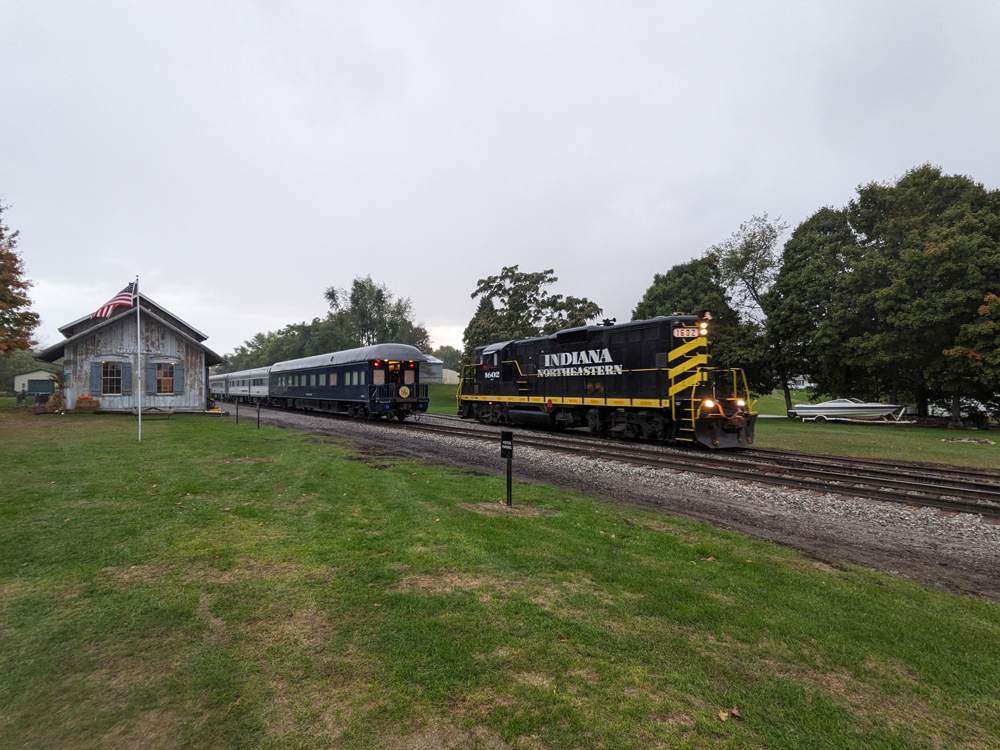
A diesel positioned at the rear of the steam train is not technically a “helper,” as it’s usually there to head the return trip back to its origin. Sometimes, though, it’s the complete opposite with the diesel leading outbound followed by the steam locomotive inbound. Steam excursions often operate on lines with few to no turning facilities – examples being a wye track and turntable. If there is a runaround track available, the steam locomotive could be put on the rear end of the train for one direction of the trip but would be running tender-first. Many museums and tourist railroads do this regularly, but this backwards running is only for a few miles and usually at slow speeds. For longer trips, higher speeds, and a bigger steam locomotive, many operators couple a diesel to the rear of the train. Although not officially a helper, an engineer in the trailing diesel can add a bit of tractive effort when the steam engineer calls for it.
Example: The Fort Wayne Railroad Historical Society’s Indiana Rail Experience is a recent example of this. Due to a single wye on the Indiana Northeastern Railroad in Hillsdale, Mich., excursions starring Nickel Plate Road No. 765 not heading to Hillsdale for turning will use a diesel at the other end of the train. The society’s Indiana Ice Cream and Summer BBQ trains take advantage of this operating practice while making shorter and multiple runs in a day.
6. Security blanket
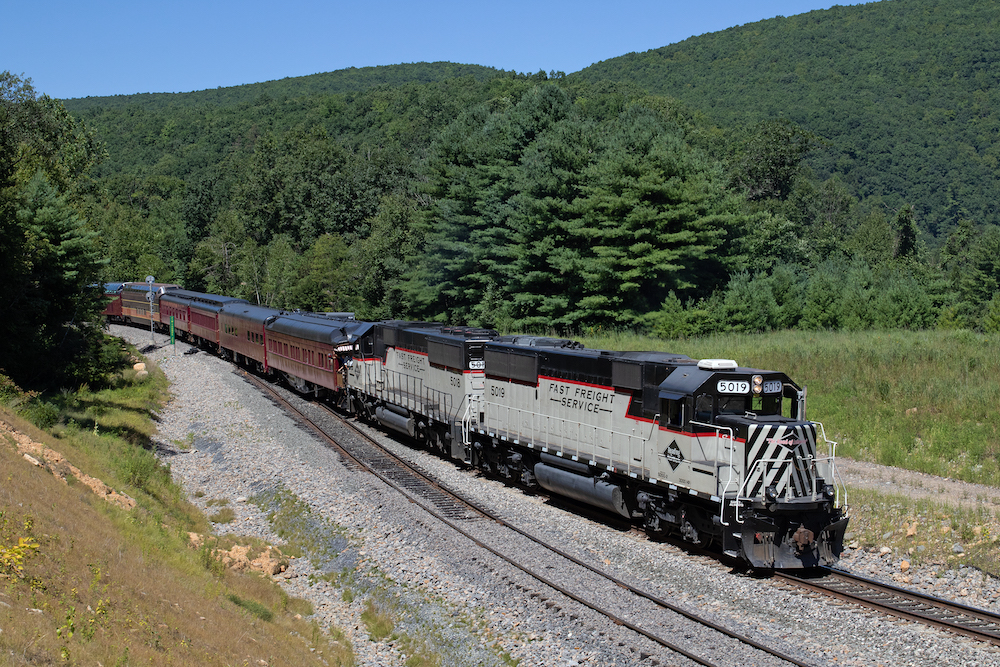
Steam locomotives can be unpredictable. Even the most well-maintained machine with the best crew in the industry can encounter a mechanical failure while on the road. That’s why some railroads and excursion operators breathe easier when a diesel is part of the consist. In the event of a mechanical failure, the helper can provide immediate assistance while keeping both the excursion and traffic along the railroad moving. It can also lend a hand as a switcher if the train needs to be rearranged or repositioned.
Example: In its first year since the 2022 restoration, Reading & Northern’s T-1 No. 2102 lugged 18-car excursions while barking up the grades from Reading to Jim Thorpe, Pa., all unassisted. However, the regional railroad commissioned a pair of EMD SD40-2 and SD50 diesels to follow closely behind as the security blanket. It came in handy on Oct. 8, 2022, when No. 2102 had to be set off in Port Clinton after its firing table failed. The helper units also have assisted in turning the train during the layover in Jim Thorpe. This practice has since ended with the T-1 now on its own.






